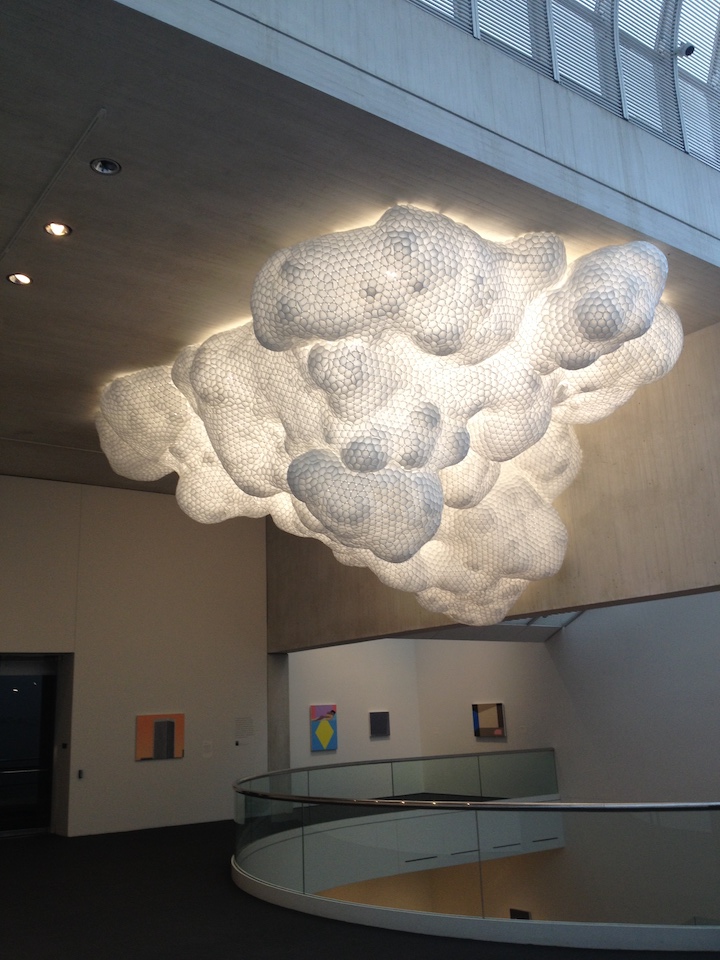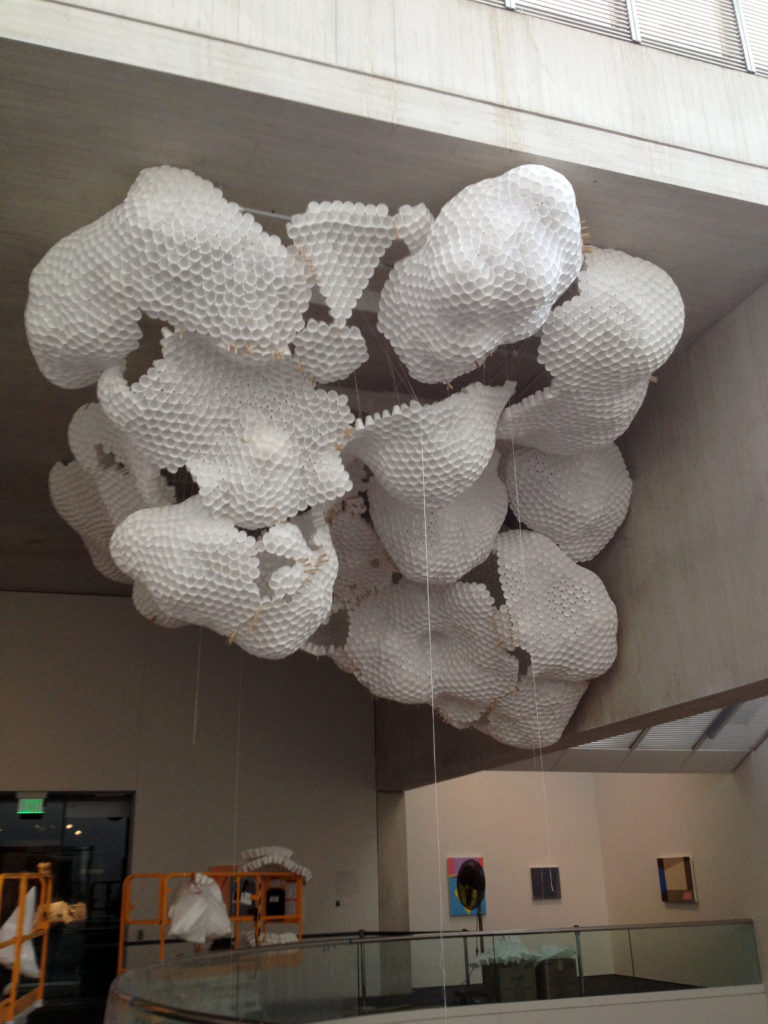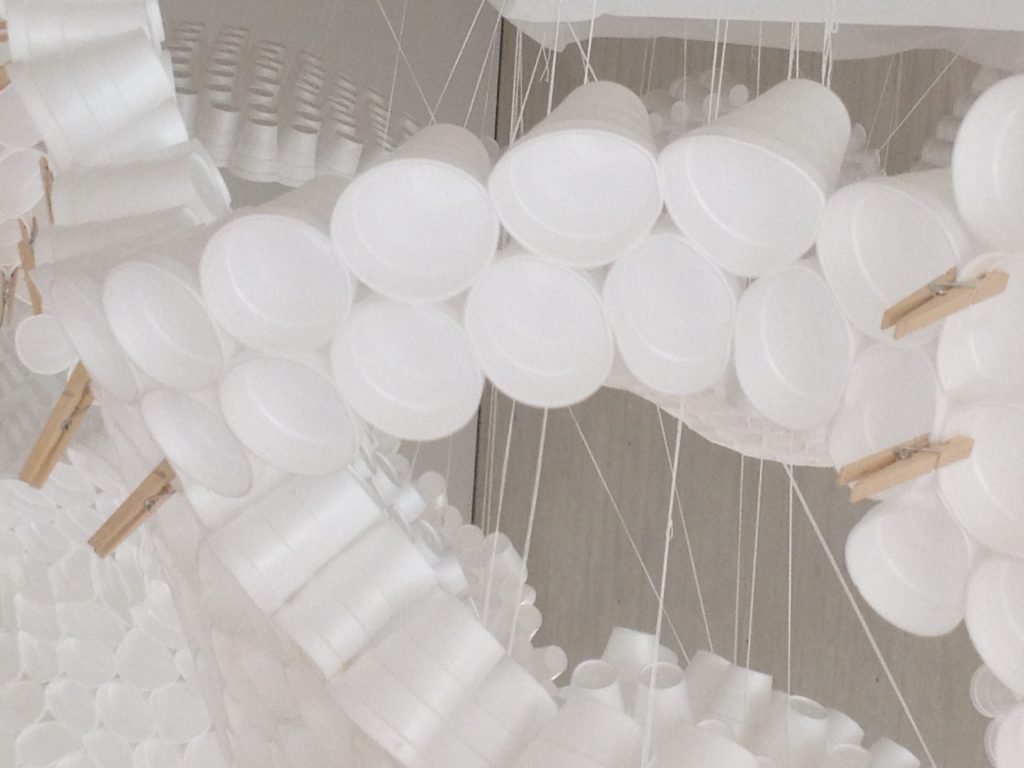This week’s contributing blogger, Tyler Wu, is an undergraduate student from Northeastern University’s D’Amore McKim School of Business with a focus on Finance with a Minor in Computer Science. His interests in the arts lie in the valuation of contemporary art and art markets.
VoCA is pleased to present this blog post in conjunction with Associate Professor of Contemporary Art History, Gloria Sutton’s Spring 2019 Honors seminar, The Art of Visual Intelligence at Northeastern University. This interdisciplinary course combines the powers of observation (formal description, visual data) with techniques of interpretation to sharpen perceptual awareness allowing students to develop compelling analysis of visual phenomena.
According to American Institute for Conservation guidelines, by definition, “Conservation encompasses all those actions taken toward the long-term preservation of cultural heritage.” When it comes to contemporary art, conservation is more challenging. Art conservators have to consider a multitude of factors when preserving art for future viewing, including but not limited to the lifespan of materials, originality of idea, and arguably most important, artist intent. But what happens when the artist doesn’t intend for their work to last forever? How do you approach conserving art that you know is supposed to “die”?
To help answer this question, I spoke with Flavia Perugini, the Associate Conservator in the Objects Conservation Department at the Museum of Fine Arts (MFA) in Boston where she is responsible for the preservation of performance art, installations, and time-based media. Prior to her work at the MFA, Flavia was appointed as a Sculpture Conservator at the Tate Modern in London and the Head Conservator at Historic Mount Vernon in Washington D.C.
During her tenure at the MFA, Flavia has been responsible for conserving one of my favorite installations—Tara Donovan’s Untitled (2003). The site-specific installation overlooks the Linde Family Wing for Contemporary Art, and is composed of Styrofoam cups and hot glue suspended from the ceiling. It is impossible to miss, and it acts as a centerpiece for the museum’s contemporary art collection. However, the installation is subject to many environmental factors that are causing the work to deteriorate. For example, the piece is completely exposed to the environment allowing dust to deposit on the Styrofoam surfaces and sunlight to shine on parts of the installation. Despite the obvious concerns, repairing the installation is no easy task, and issues concerning artist intent come into question. In our conversation below, Flavia outlines the considerations when preserving Tara Donovan Untitled.

As a conservator, your job typically involves ensuring that works are preserved for future viewers. However, as you had mentioned during our conversation at the MFA, the Tara Donovan piece will eventually reach the “end of life” considering the inevitable deterioration of the Styrofoam cups. How do you approach conserving art that you know is supposed to “die?”
As conservators we have the responsibility and duty to preserve all art. In our work, we don’t differentiate between long lasting or short-lived artworks, and we treat both with the same respect. We are well aware that some artworks will continue to degenerate no matter what measures we take and eventually they will reach the end of their life. What a conservator can do is to try and slow down the degradation of materials by improving their storage or display conditions, where possible.
Per our conversation at the MFA, in the event that the state of the Styrofoam cups begins to decline, you would refrain from replacing all cups, not only because the specific style of the cups used had been discontinued, but also because if you were to do so, you would impersonate the artist and take decisions on her behalf. Given this dilemma, when do you decide to fix pieces versus let them fade away? And what steps can you take to preserve this kind of art without assuming the identity of the artist?
Let me rephrase this. If a handful of cups were damaged, I would replace them, and if a section became detached, I would reattach it. This was discussed with the artist who gave permission and instructions to carry out this type of intervention. What I, the conservator, wouldn’t do is reconstruct the object. So, for example, if the installation had to be cut into to access and replace the lights, it might be difficult to repair it or reinstall it afterwards. In that case we would first contact the artist and discuss the need to replace lights, or deinstall the object. Other institutions with similar installations by Tara Donovan in their collections have had those conversation with the artist, so we would follow the same procedure.

Have you spoken to the artist about her wishes for the conservation of this work?
The MFA hasn’t had specific conversations with the artist about the future of the installation and her wishes for it. It is certainly understood that at some point the installation will reach a turning point and drastic decisions will have to be made. Up until very recently we have been having conversations internally, with representatives from different departments, as well as Trustees. Now we are just about ready to discuss it with the artist so we will be contacting her soon. Generally speaking, artists may not be aware of or concerned with the “end of life” of their work when they are creating it. For this reason, Artists Interviews are useful and necessary in recording the artist’s intent and desires for the care and handling of their works.
At what point do you decide that the life cycle of a piece has run its course? What are the steps you take in destroying it?
An artwork reach[es] the end of life usually when the materials are irreparable and irreplaceable. For example, when I worked at Tate, I became familiar with several artworks by artist Naum Gabo which had reached their end of life and were deemed unsuitable for display. The pieces were retired to cold storage, a storage room with very low temperatures, to preserve the degraded objects that were made of various plastics, including nitrocellulose. The plastics had crumbled or had cracked and/or warped. The artworks were not disposed of because [they are] still important and valuable from a research point of view. So artifacts that reach their end of life and can’t be displayed any longer are usually retired to storage for study purposes. In the case of installations, the approach may be different. They are like performances and their fragile materials may mean they have a time component [and] therefore they may need to be treated differently. In that case, those materials or components are destroyed by the conservator, or collection manager, or registrar and photographic documentation is then shared with the relevant parties to prove that parts were really destroyed. This decision is usually rare and widely discussed at all levels before the parts can be destroyed.

It is unclear when Untitled will reach its end of life. But until then, it will remain a cornerstone of the MFA’s Contemporary wing. There is a certain beauty in the mortality of art—it offers meaning and forces one to be present with the work. For installations like Untitled, sometimes the inevitability of death can bring the work to life.
